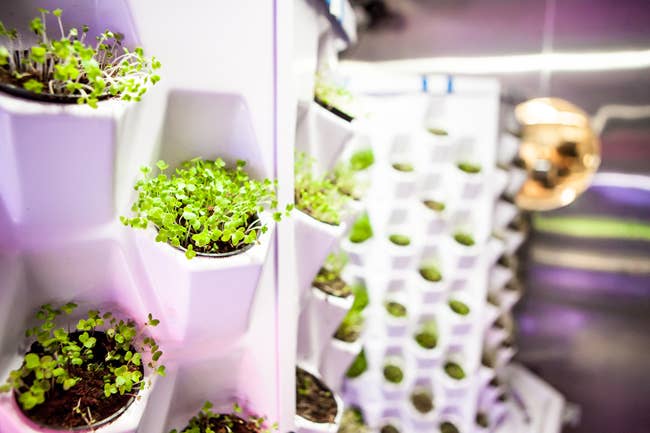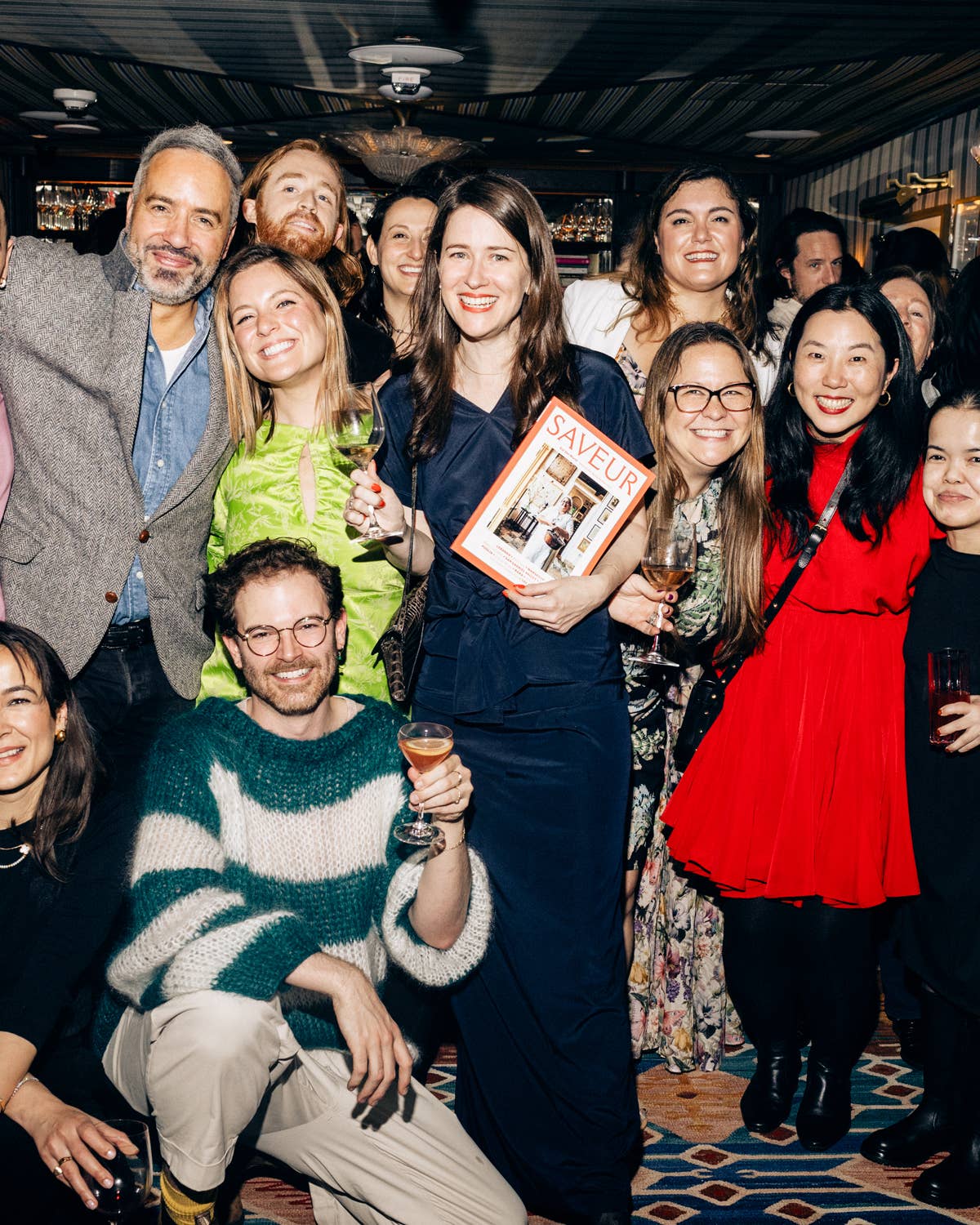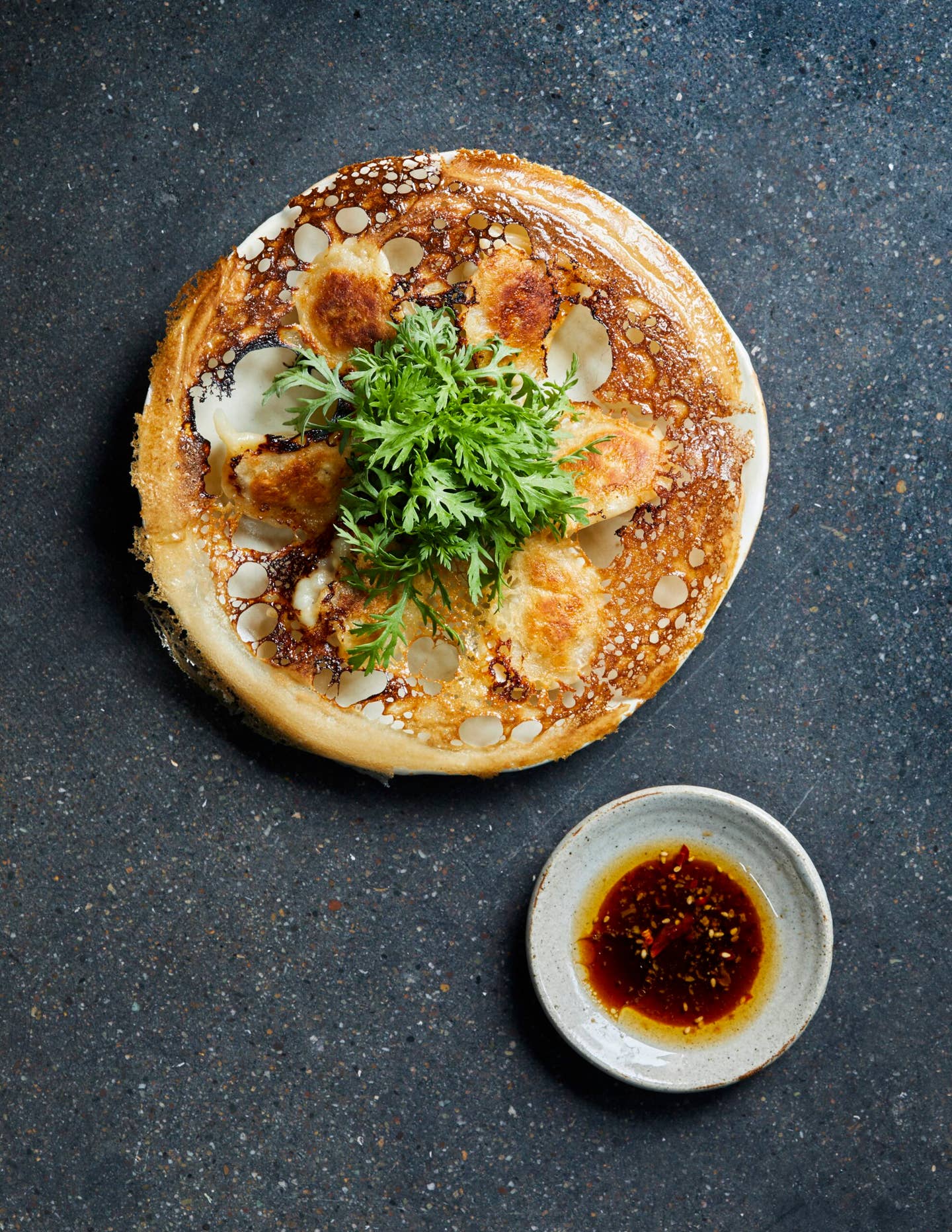
In the Kitchen at Moto
At Chicago’s most innovative kitchen, a back-to-the-earth LED-lit farm shares the kitchen with methocellulose and sodium citrate
Chef Homaro Cantu has more patents than he can remember and, at his Chicago-based gastronomy temple, Moto, a collection of gadgets better suited for a laboratory than a kitchen. Naturally, a chef that pushes culinary and scientific boundaries has a pantry stocked with all sorts of rarities that lend to experimentation. "I've never heard of half of this shit before I get it," pastry chef Ben Roche says of the restaurant's ingredient-buying philosophy. Here, Cantu and Roche give us a tour of what's hiding inside Moto's kitchen.
Homaru Cantu, Chef/Owner
In our former office space, we put in a grow room [called Moto Farm, pictured above]. We take all the food scraps from the kitchen and compost it with worms. That produces the soil, which we use to grow fruits and vegetables. It occupies a small footprint, ideal for growing medium products. This grows at 50 percent faster than even the world's best indoor farms because kitchens are humid and warm with the perfect temperature for growing plants, and we have low voltage LEDs that are tuned to the perfect spectrum for growing plant life. These consume roughly 20 watts per panel and rotate, giving a little resistance to the plants. Rather than using fans, this uses a very low-powered source to move it. There's a little container of water with a stick inside it that sprays up every five minutes using a mechanical sprayer. So there's not very complex technologies for this aside from the LED.
What we're planting in here this week is square watermelons, heirloom tomatoes, zucchini, micro-carrots. Our goal is to offset all of our produce bill by the end of the year. Micro-products used to cost me $1,000 per week, so the room pays for itself in 90 days—the whole build out and everything. After that, you're saving a ton of money because there's no packaging or refrigeration of product. Chefs come in here four times a night and just clip what they need, then take whatever is left over and compost it.
Square watermelons are really cool because you take a watermelon, put it into a plastic box and play classical music on opposing sides of the watermelon. The audio vibrations will actually straighten out the water molecules that match the earth's magnetic polarity. It produces a watermelon that some say is 50 to 80 percent sweeter than a regular watermelon—and they look really cool. It's the shape and the vibrations that come from the music—we're just choosing classical music [arbitrarily]. I'm sure it could be any form of music, but we're going to see. It could just as easily be Bob Marley.
We were growing these white pineberries, which are a dormant pineberry from Denmark. They look like little white strawberries and when you grow these, they actually have a compound in them that makes them taste exactly like bubblegum. When you clip them and stack them in a pint container, you have like eight hours before they turn to mush. Low shelf-life products like that, you can grow in here.
We're going to be getting in some exotic stuff like Devil's Claw, which I've only seen twice in my life. We're going to try everything here. We have an office at ING restaurant that we're planning on using to plant an orange tree, a banana tree, some avocado plants, and other big stuff. The fascinating thing is that this project throws the entire idea of seasonal products out the window. Everything is seasonal now, it's just what you want to serve.
Moto 2
Credit: Huge Galdones
The Moto spice rack
Ben Roche, Pastry Chef
Fruit of mumeplant is a stone fruit similar to a plum. These are dried and fermented because they're really black. I got this on Argyle Street [in Chicago's Vietnamese neighborhood]. We have a dish that looks like a cup of coffee, but it's only a thin layer of coffee gel on top with a bunch of other stuff underneath. So, I'm adding some of these into the jelly to give it a really black color, and it adds a really nice sour element to it. I used to use dried rehmannia roots, which is a fermented root, kind of sour. It's used in medicinal Chinese tea.
Poontalai Seeds are like these little husks or shells with tiny seeds inside. This has a similar effect to basil seeds. I was using this for a dish to mimic tapioca: I would soak these in a lemongrass and kaffir mixture and it would get thick like tapioca and it would get like chia seed. They're cool for a couple reasons. You can get a lot of textures from them, whether its tapioca or thickening something.
I've never heard of half of this shit before I get it. I like to go to the stores to look for new stuff and I'll have no idea what it is, but I like to play around with it. I'd say half the time, I can make something interesting and the other half is a waste of time. You never know.
The spice rack is all pretty normal until just about here and then it starts to get interesting. It's all thickeners and emulsifiers like egg white powder, and versa whip 600k. Some of these have ridiculous names and numbers after them. There are about 45 big containers and 45 smaller ones. The glycerin flakes we don't use a lot of, but you can use them to emulsify. Sodium citrate sounds weird but it just reduces the pH levels of things, or reduces the effect of an acid. Ultratex 8 is a modified tapioca starch, so instead of adding starch to something to cook it, you can get all the thickening power without having to heat anything up. Methocel F-50 is a type of methocellulose—we don't really use that right now, but we have in the past to make souffles. It's usually used as a thickener, and allows you to whip or aerate things. The cool property it has is that when it gets warm, it starts to gel, so it's like the opposite of gelatin that sets when it gets cold.
Related
Keep Reading
Continue to Next Story










